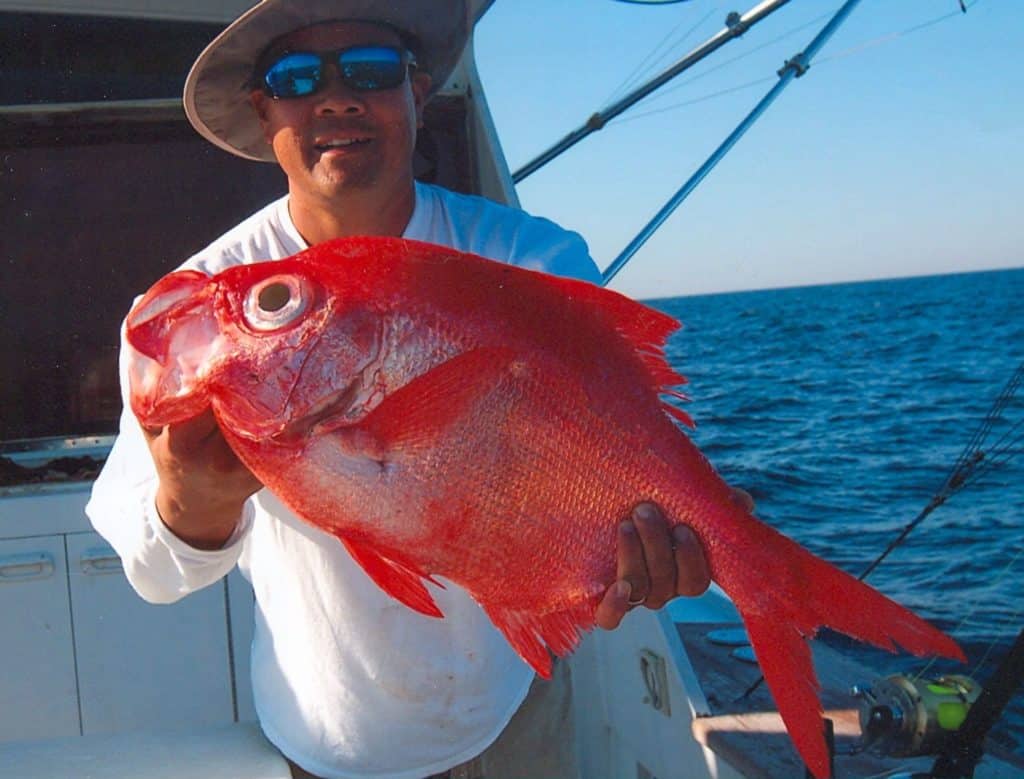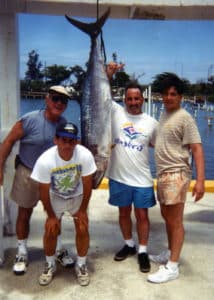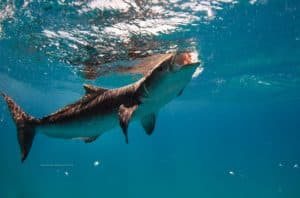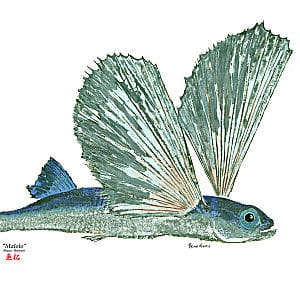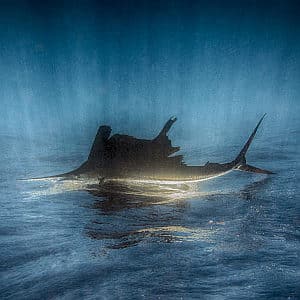Sure, anyone can catch a world-record bluefin tuna or bonefish. But a birdbeak dogfish? Or a blackbarred morwong? Or a Darwin’s slimehead? If one pores through the International Game Fish Association’s all-tackle world-record list, some truly weird critters stand out. Curious, I set out to learn more about the record caches and the species. Here’s what I found.
(You’ll note that these fish are not generally monstrous in size — but they make up for that modest stature with the weirdness quotient. Also, special thanks to the IGFA’s curator of world records, Jack Vitek, for his invaluable assistance rounding up most of these images.)
JAPANESE BULLHEAD SHARK (Heterodontus japonicus)

Location: Akazawa, Japan (south of Tokyo)
Date: April 2013
Bait/lure: cut mackerel
Angler: Yuuma Nishino Courtesy IGFA / igfa.org
About the species: Found in the northwestern Pacific ocean, the bullhead shark lives near shore. The slow-moving species may reach about 4 feet. It has no significant commercial value.
TEIRA BATFISH (Platax teira)
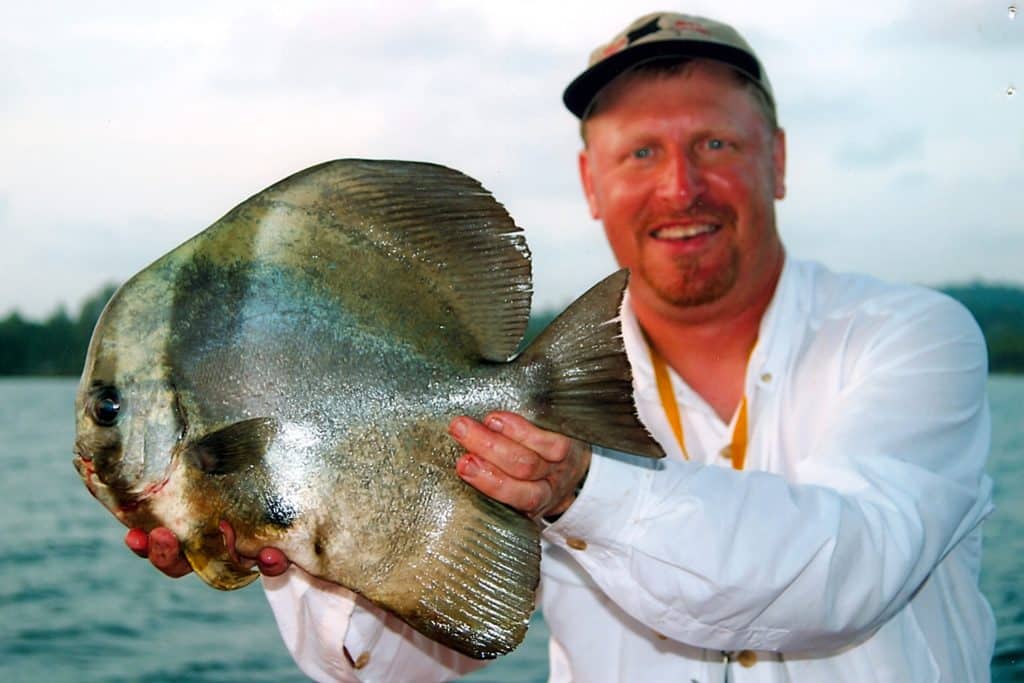
Location: Kut Island, Thailand
Date: January 2006
Bait/lure: squid
Angler: Steve Wozniak Courtesy IGFA / igfa.org
About the species: The teira is the largest of the five types of batfishes, reportedly growing to about 2 feet in length. It is found throughout the western Indo-Pacific. Elegant juveniles are sold as aquarium fish. I’ve seen them often in small schools taking up temporary residence around the stern of anchored ships, eagerly competing for scraps of food and garbage.
LONGFINNED BULLSEYE (Cookeolus japonicus)

Location: Ogasawara, Japan Date: March 2014
Bait/lure: Metal jig
Angler: Toshiro Yokoshima Courtesy IGFA / igfa.org
About the species: The striking longfinned bullseye is a member of the family of bigeyes, Priacanthidae, tropical fishes that live around rocks and reefs. Most, like the bullseye, are strikingly scarlet. Bullseyes are found in all warm seas except the eastern Atlantic and typically in fairly deep waters of 400 to 600 feet.
HOG MULLET (Joturus pichardi)

Location: Rio Sarapiqui, Costa Rica Date: August 1995
Bait/lure: ragos eel fly
Angler: Carlos Barrantes Courtesy IGFA / igfa.org
About the species: More commonly called the bobo mullet, these strange mullet with a pronouned nose and underslung mouth are found in shallow waters of the Caribbean along the Central American coast.
BIRDBEAK DOGFISH (Deania calcea)
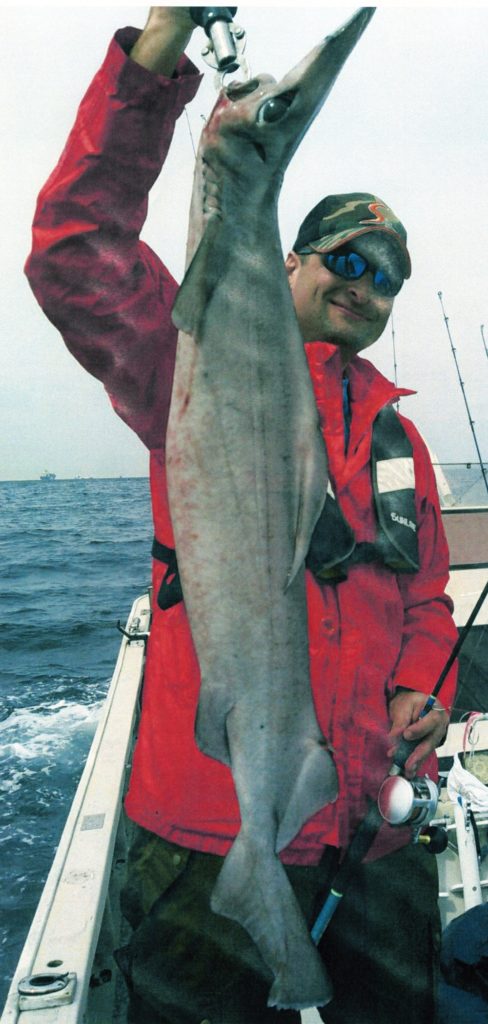
Location: Tokyo Bay, Japan
Date: April 2015
Bait/lure: Inchiku jig
Angler: Phillip W. Richmond, Jr. Courtesy IGFA / igfa.org
About the species: This strange-looking shark seems an unlikely capture on sporting gear since it is usually found in deepwater, typically 1,500 to more than 6,000 feet. But it does come into somewhat shallower water and will often feed well above the bottom. It is found in cool waters of both the Atlantic and Pacific oceans.
BUTTERFLY KINGFISH (Gasterochisma melampus)
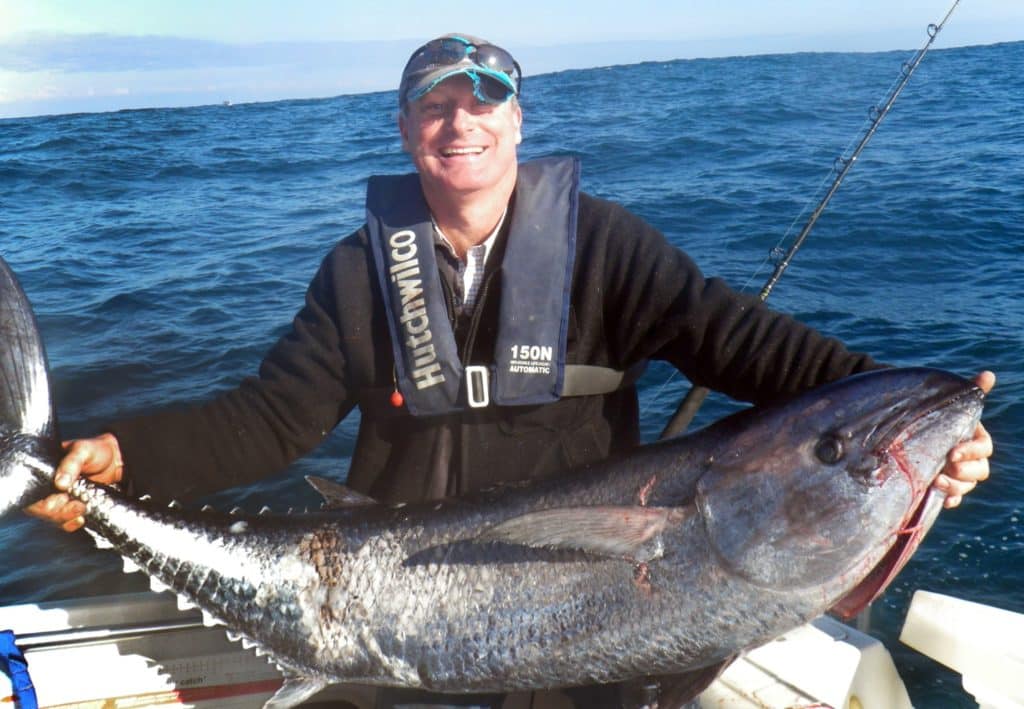
Location: Portland, Australia
Date: May 2012
Bait/lure: Rapala Magnum
Angler: Simon Falkiner Courtesy IGFA / igfa.org
About the species: Something of an outlier in Scombridae, the family of tunas and mackerels, the odd-looking butterfly kingfish is found circumglobally but only in cooler southern reaches. Apparently these uncommon fish prefer deep waters.
ROUNDNOSE GRENADIER (Coryphaenoides rupestris)
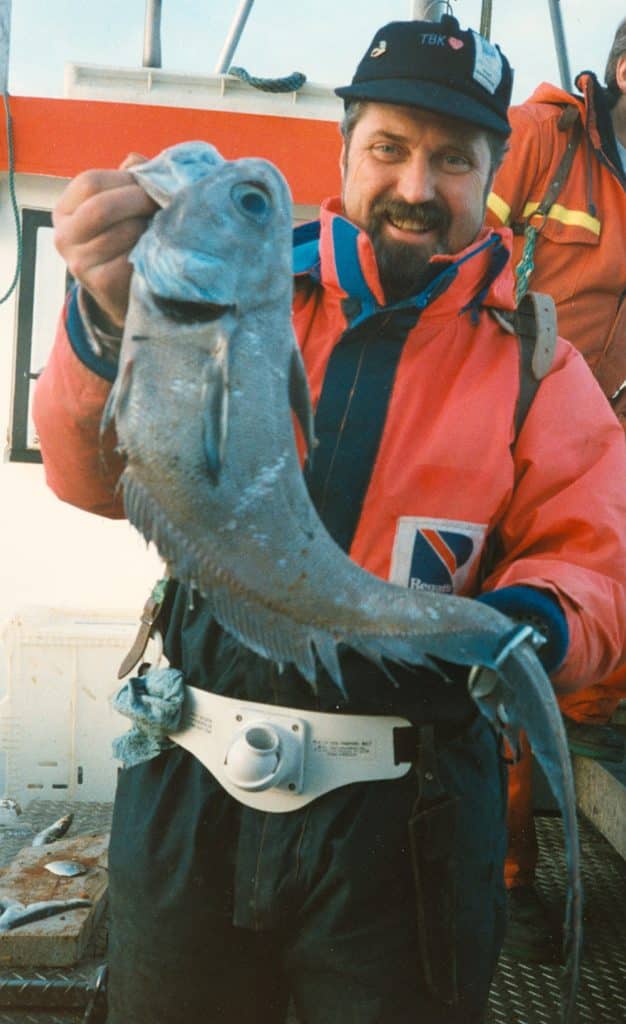
Location: Trondheimsfjorden, Norway
Date: November 1993
Bait/lure: herring
Angler: Knut Nilsen Courtesy IGFA / igfa.org
About the species: Grenadiers are found in very deep, cold waters of the world. In the same order as codfishes, they are also called whiptails. Some species have commercial value, including the roundnose of the north Atlantic (considered excellent eating) and the hoki found off southern New Zealand. (Bycatch from that trawl fishery attracts southern bluefin tuna in large numbers, which anglers target in those typically storm-tossed seas.)
BLACKBARRED MORWONG (Cheilodactylus quadricorni)
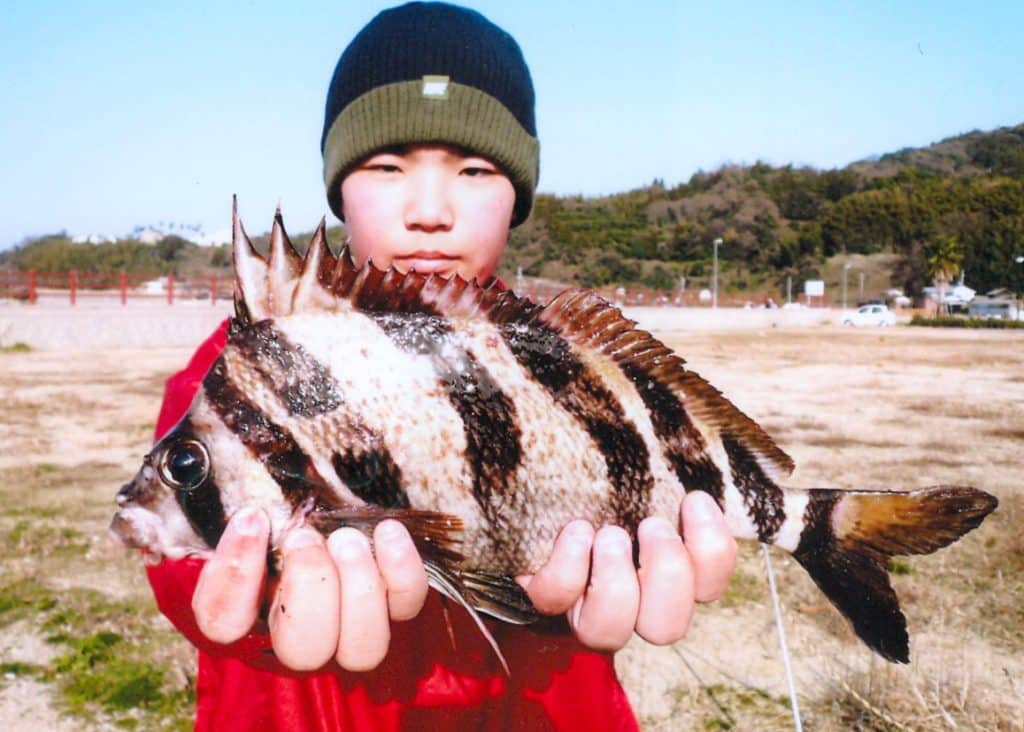
Location: Suou-Oshima, Japan
Date: March 2009
Bait/lure: jig and bait
Angler: Yukio Takata Courtesy IGFA / igfa.org
About the species: Most species of morwongs (family Cheilodactylidae) are found in the southern hemisphere but a few — including the blackbarred — are taken off Japan and China. Some species approach 4 feet in length but most are much smaller. They are apparently associated with rocks or other structure.
LEOPARD TOADFISH (Opsanus pardus)
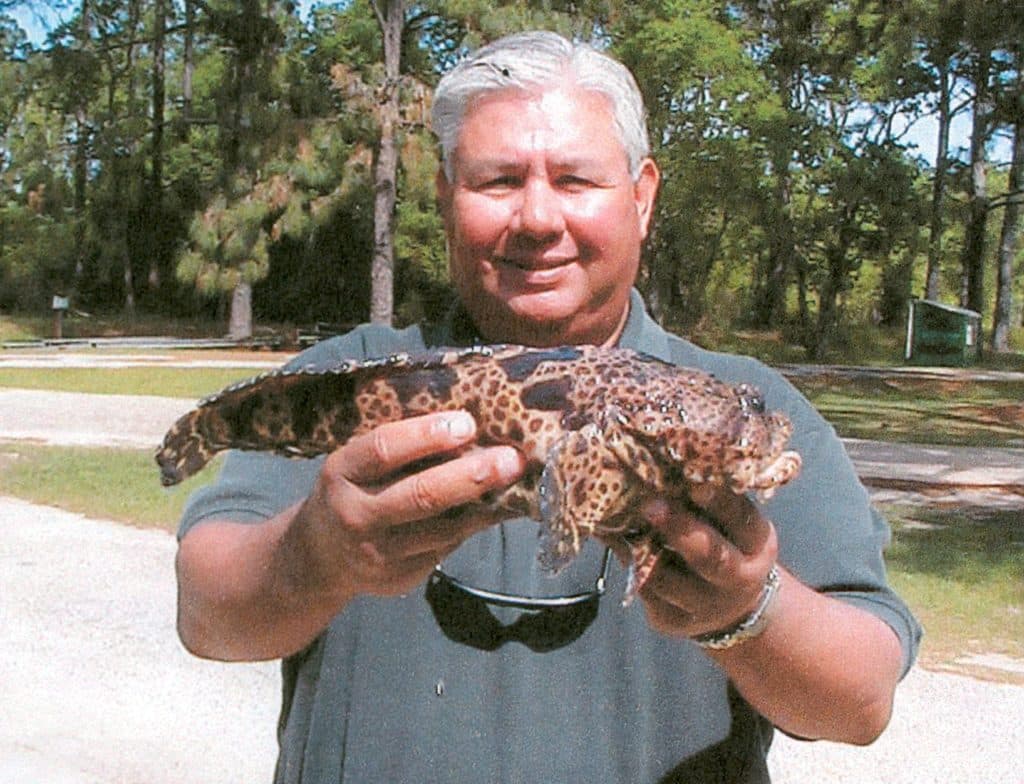
Location: Orange Beach, Alabama
Date: April 2003
Bait/lure: cut mullet
Angler: Chuck Andre Courtesy IGFA / igfa.org
About the species: Common along the coastal U.S. Southeast and south to Brazil, including the Gulf of Mexico, the leopard toadfish is found over deeper rocky areas. Ugly yes; evil no — toadies sport no toxic spines of any sort.
RED CORNETFISH (Fistularia petimba)
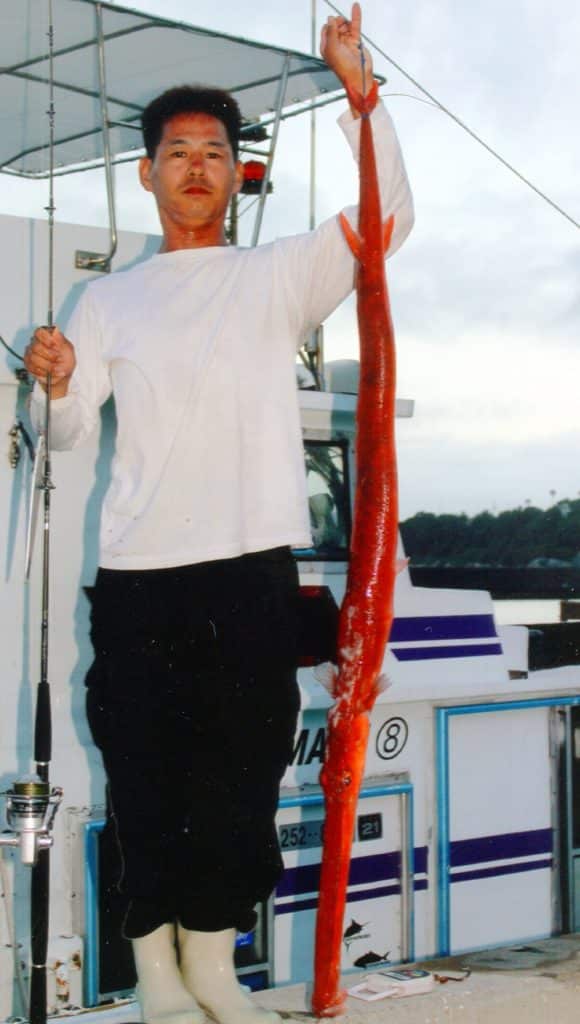
Location: Goto, Japan
Date: June 2014
Bait/lure: metal jig
Angler: Hiroaki Okano Courtesy IGFA / igfa.org
About the species: Found in most tropical and temperate waters, this odd fish can reportedly reach 6 feet in length. It lives nearshore, using its long tubular mouth to create a powerful vaccuum to suck in small fishes and invertebrates.
FROG SHARK (Somniosus longus)
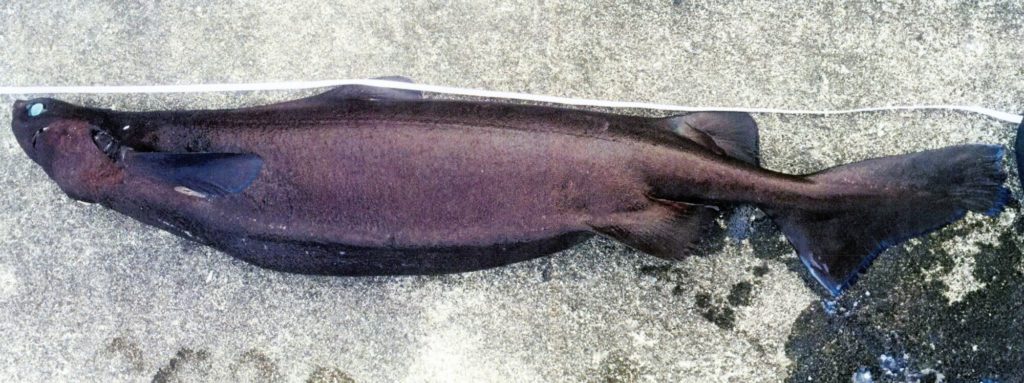
Location: Sagami Bay, Japan
Date: April 2015
Bait/lure: unknown
Angler: Phillip W. Richmond, Jr. Courtesy IGFA / igfa.org
About the species: A member of the family of deepwater sleeper sharks, frog sharks have been caught off Japan and New Zealand, mostly by trawlers, longliners and in deepwater crab pots, but never commonly and usually in 800 to 3,500 feet of water.
BLUE MAOMAO (Scorpis violaceus)
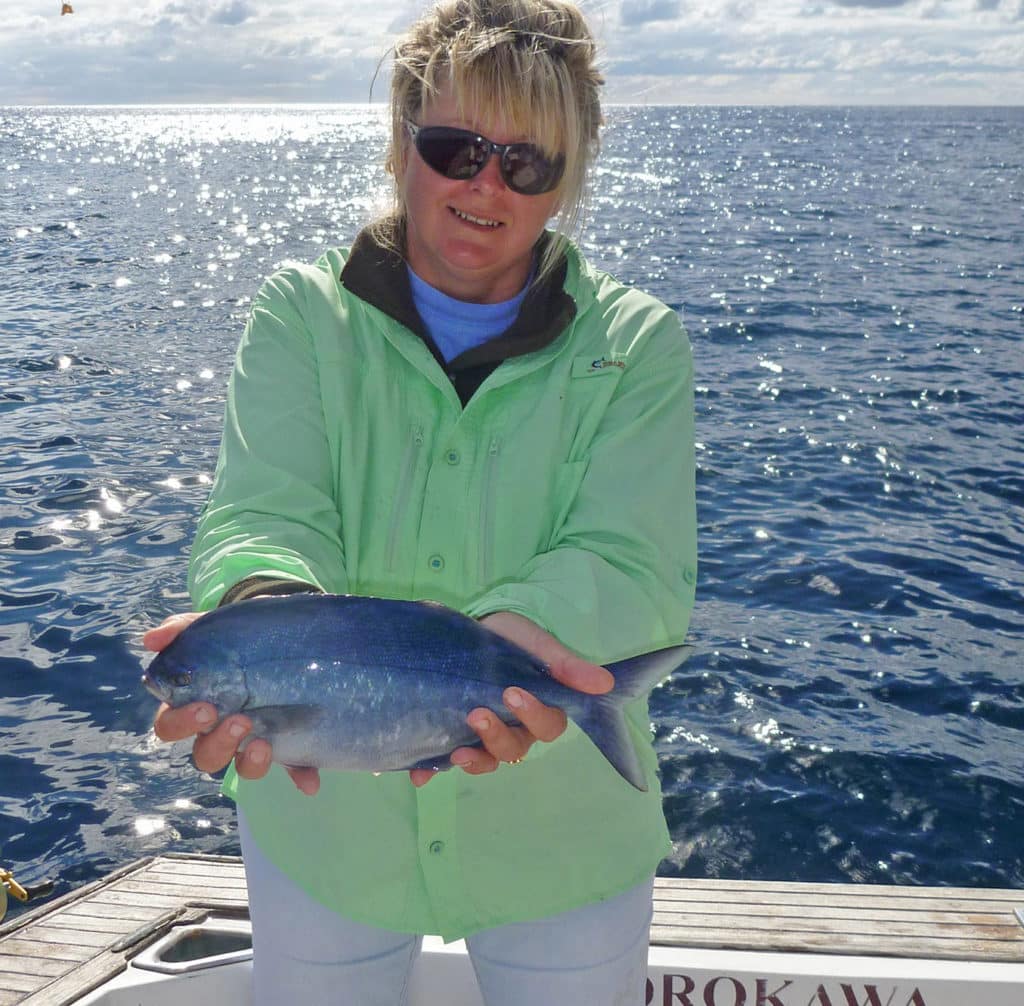
Location: northern New Zealand
Date: May 2012
Bait/lure: cut skipjack
Angler: Sue Tindale Courtesy IGFA / igfa.org
About the species: The blue maomao is one of the most colorful of the sea chubs, small-mouthed structure-loving fishes common around the world. The blue maomao is limited to Australia, New Zealand and nearby waters. They’re considered tasty food fishes by New Zealand anglers.
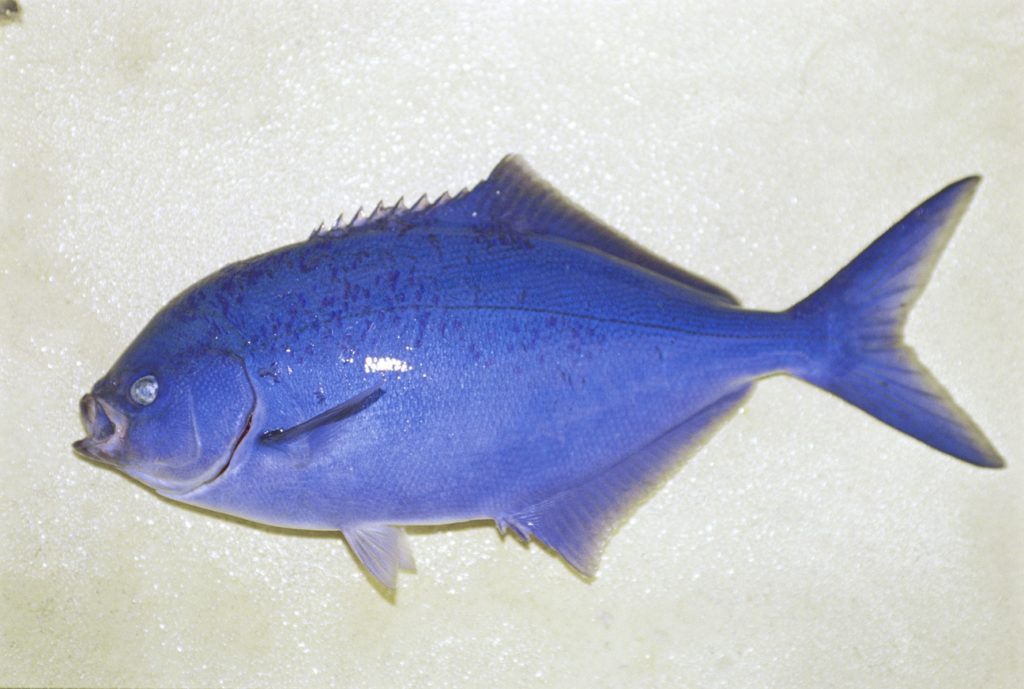
CHANNEL SCABBARDFISH (Evoxymetopon taeniatus)
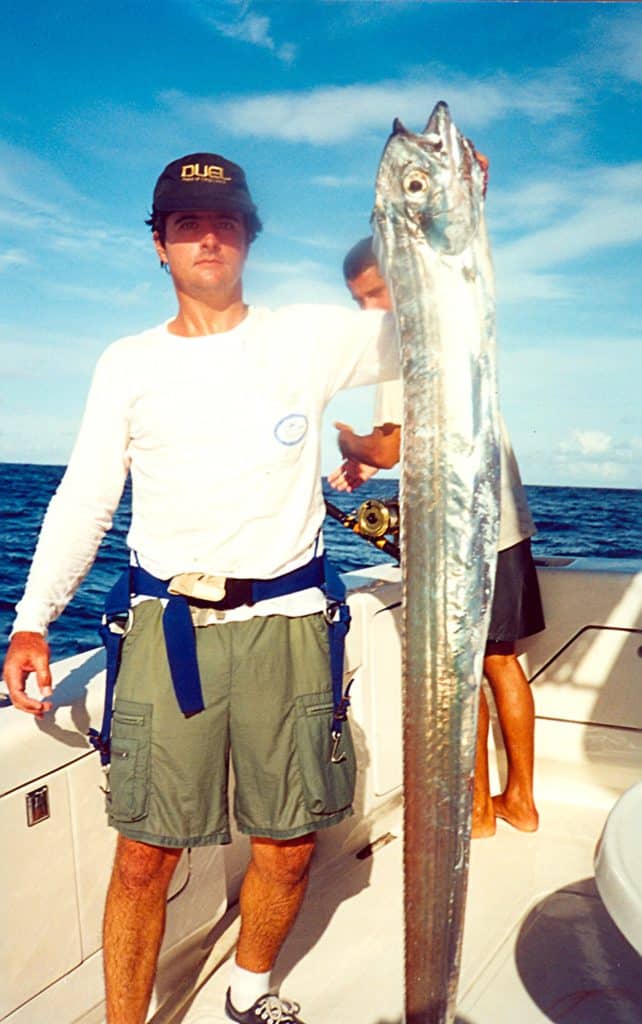
Location: Rio de Janeiro, Brazil
Date: April 2002
Bait/lure: squid
Angler: Eduardo Baumeier Courtesy IGFA / igfa.org
About the species: The family Trichiuridae, to which this species belongs, includes the cutlassfishes — long, silvery fishes (like flattened eels) with large teeth. Generally, these are found in fairly deep water, though many trichiurids feed near the surface at night. The channel scabbardfish is rare and little is known about it. It appears limited to waters of the western Atlantic, from the U.S. eastern seaboard into the Gulf of Mexico and south to northern Brazil.
DARWIN’S SLIMEHEAD (Gephyroberyx darwinii)
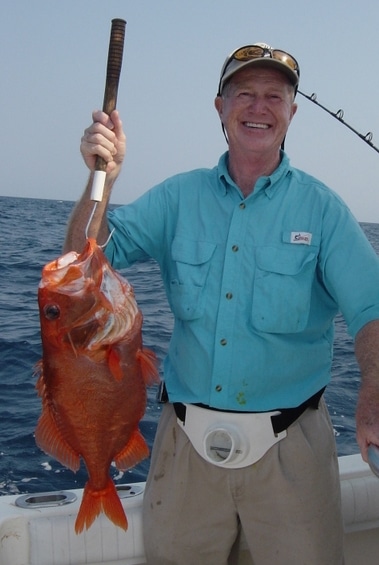
Location: Norfolk Canyon off Virginia
Date: August 2008
Bait/lure: menhaden
Angler: Ron Van Kirk Courtesy IGFA / igfa.org
About the species: Slimeheads are also called roughies, with the orange roughy being the best known (somehow “orange slimehead” might be a less marketable name); it and the Darwin’s are among the largest slimeheads and also the most impacted by commercial fishing. The Darwin’s slimehead is found in tropical and temperate regions of Atlantic and western Pacific Oceans in fairly deep waters.
SICKLEFISH (Drepane Punctuata)
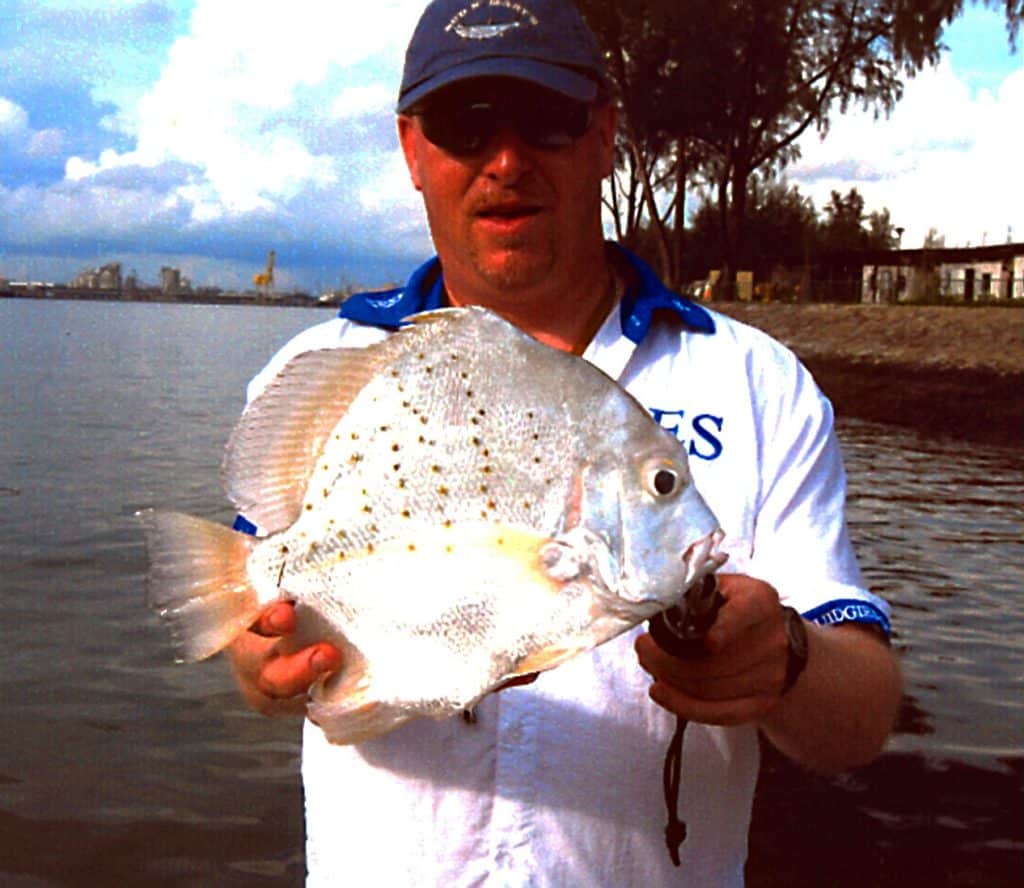
Location: Singapore
Date: April 2010
Bait/lure: prawn
Angler: Steve Wozniak Courtesy IGFA / igfa.org
About the species: Shallow reef and estuary dwellers found in tropical and temperate Indo-Pacific waters, Sicklefish make a popular light-tackle target for anglers who appreciate their fine ediblity.
VELVET BELLY LANTERN SHARK (Etmopterus spinax)

Location: Langesundbukta, Norway
Date: October 2000
Bait/lure: mackerel
Angler: Arild Borreson Courtesy IGFA / igfa.org
About the species: The velvet belly lantern is an odd little shark is found in cold and temperate waters of the eastern Atantic, this deepwater member of the dogfishes generally lives in 200 to more than 8,000 feet. It is caught commercially for use as fishmeal, and dried and salted for human consumption.
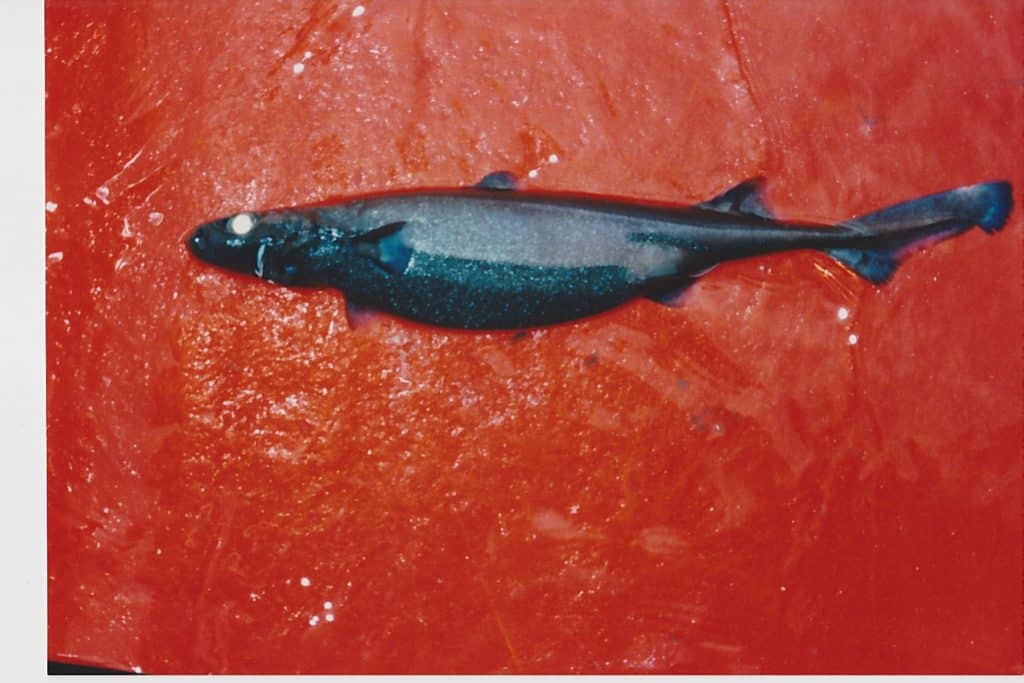
SNOEK (Thrysites atun)
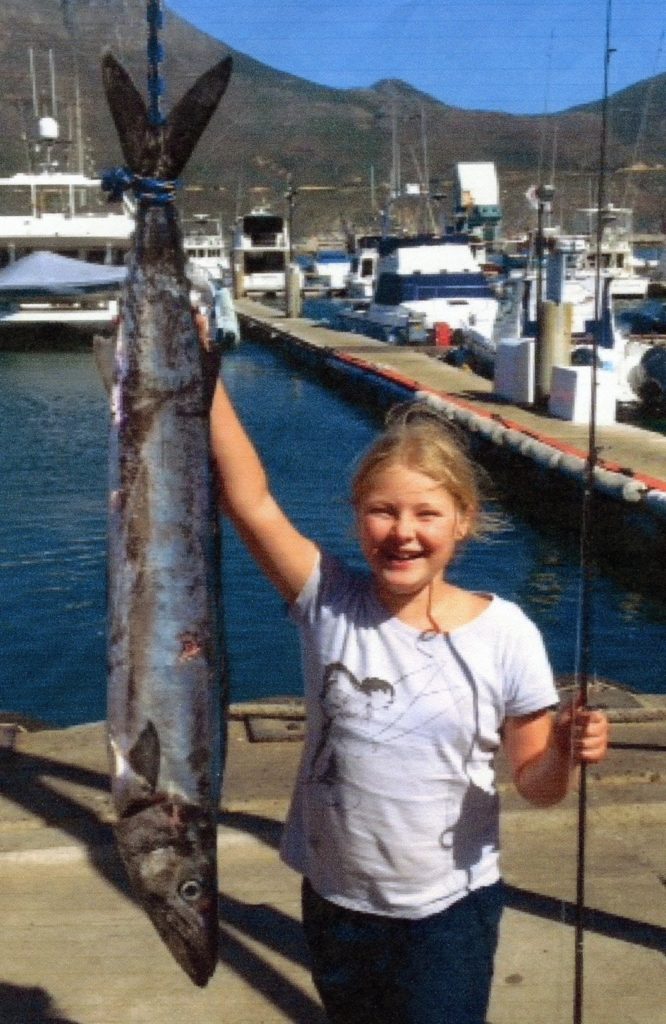
Location: Cape Town, South Africa
Date: January 2015
Bait/lure: sardine
Angler: Karla Dawn Rautmann Courtesy IGFA / igfa.org
About the species: Called snoek off South Africa, T. atun is known as barrcouta off New Zealand and Australia. The species, found in temperate waters of southern oceans, is part of the family of snake mackerels (Gempylidae). The toothy species lives in deep water but may rise to the surface to feed at night. It is fished commercially and caught by anglers; its oily flesh is often smoked or grilled.
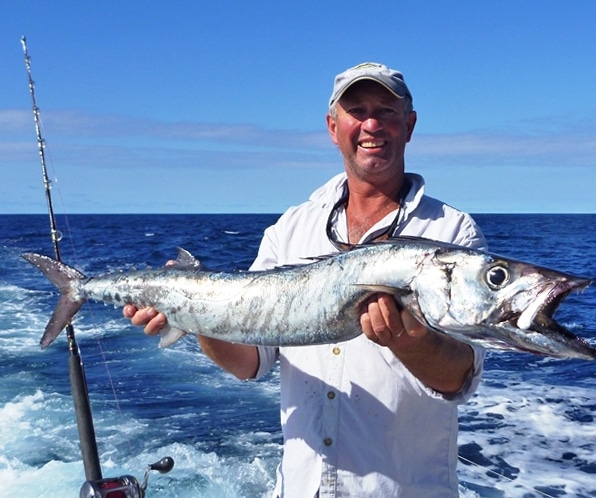
GNOMEFISH (Scombrops boops)
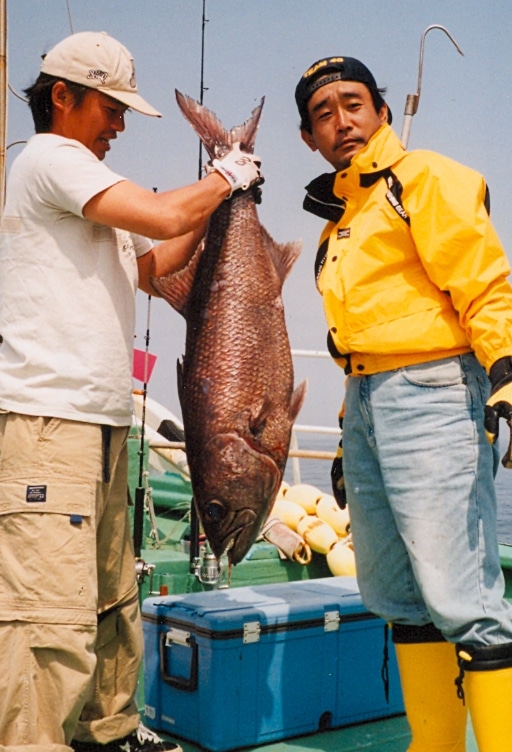
Location: Nanbu, Japan
Date: May 2000
Bait/lure: jig Courtesy IGFA / igfa.org
About the species: One of three members of the small family Scombropidae, the gnomefish lives around rocky bottoms in 200 to more than 1,000 feet in the temperate Indo Pacific from the southern part of the African continent to Asia. It’s similar to the Atlantic scombrops found in the western tropical Atlantic and is a commercially important species.
DAINANUMIHEBI (Ophisurus macrorhynchus)
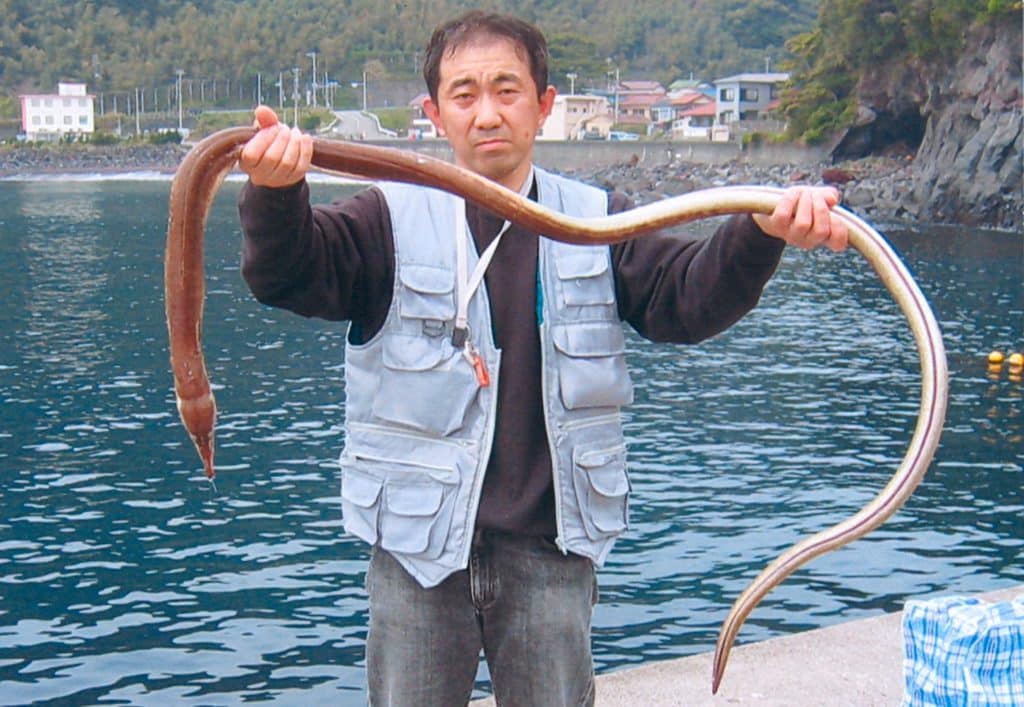
Location: Shimoda, Japan
Date: April 2008
Bait/lure: cut mackerel Courtesy IGFA / igfa.org
About the species: While it may look snaky, this critter is a fish — an eel in the family of worm eels and snake eels. Dainanumihebi are found in the temperate waters of the IndoPacific and the Atlantic.
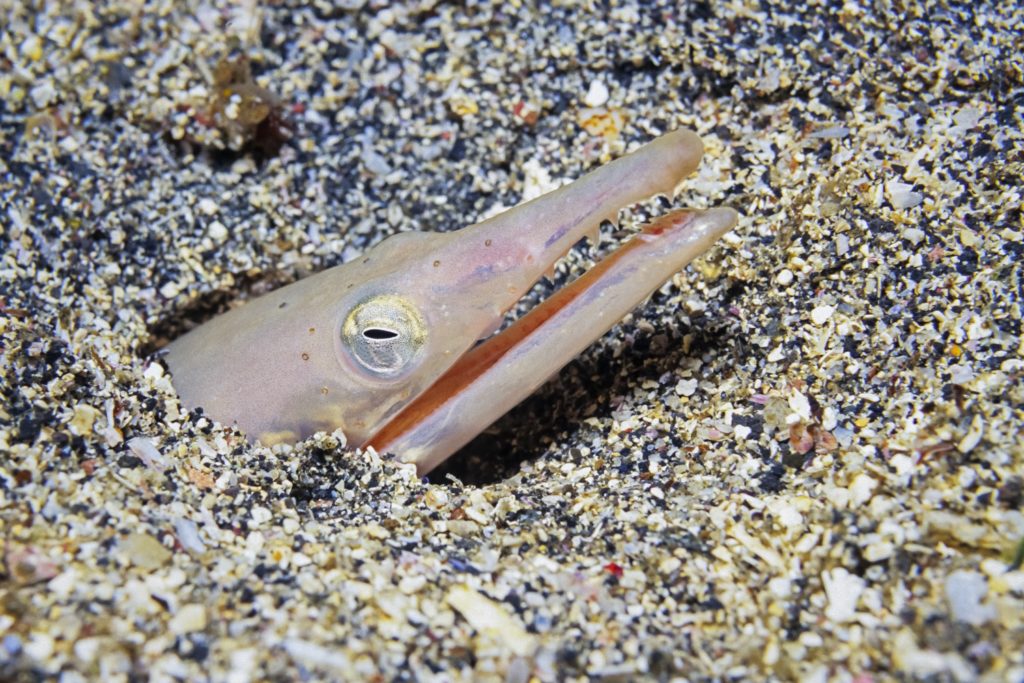
SPOTFIN BURRFISH (Chilomycterus reticulatus)

Location: Kozushima, Japan
Date: July 2004
Bait/lure: mackerel Courtesy IGFA / igfa.org
About the species: A large member of the puffer family, the spotfin burrfish is found circumglobally in warm seas over reefs and soft bottoms to 300 feet or more.
RED GURNARD (Chelidonichthys spinosus)

RED GURNARD (Chelidonichthys spinosus)
Location: Falmouth Bay, England
Date: October 2011
Bait/lure: mackerel Courtesy IGFA / igfa.org
About the species: The family of gurnards and sea robins are characterized by their large winglike pectoral fins and spiny leglike appendages with which they “walk” on sandy or muddy bottoms, looking for anything edible. Found in the northwestern Pacific, red gurnards are commercially important and in some areas targeted by anglers.
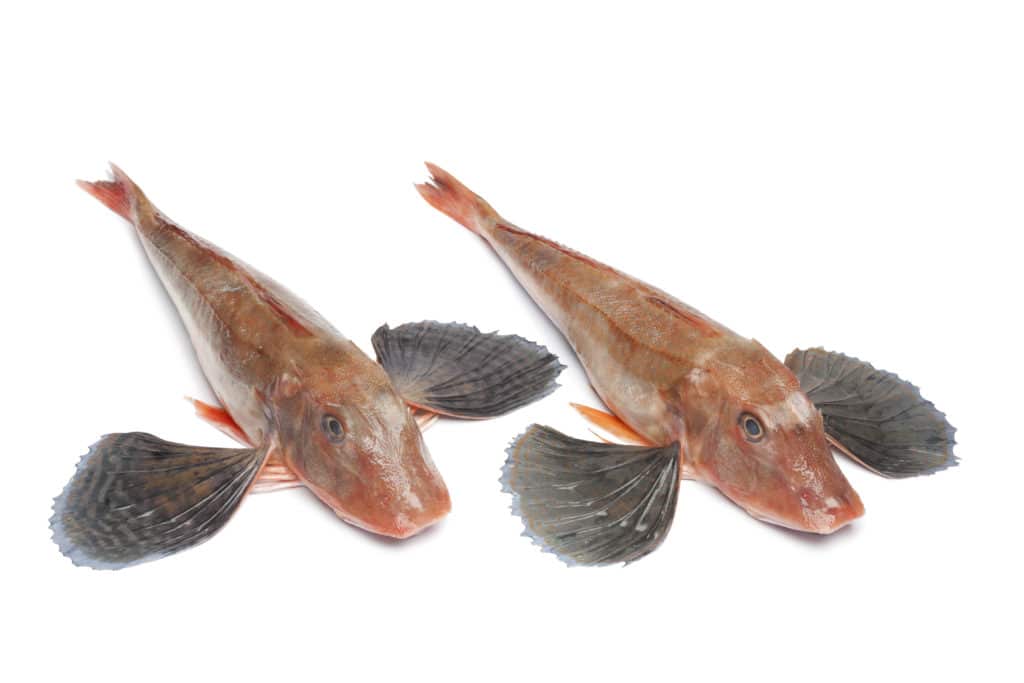
NORTHERN STARGAZER (Astroscopus guttatus)
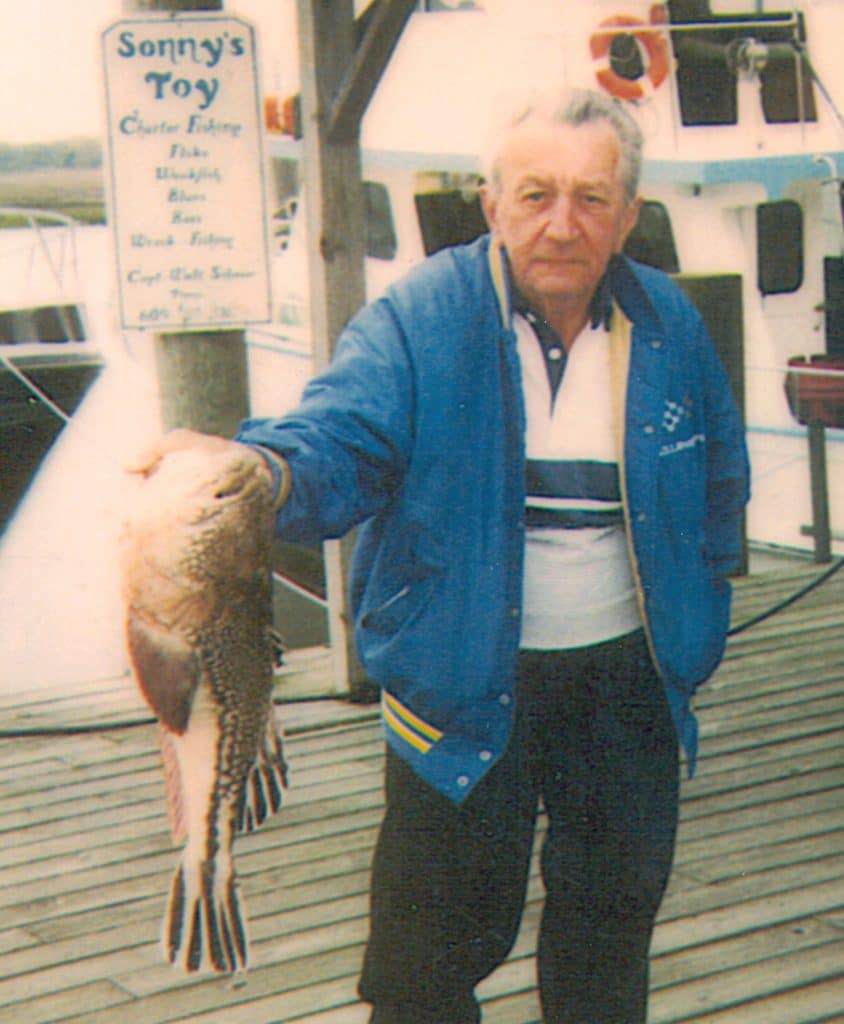
Location: Cape May, New Jersey
Date: June 1998
Bait/lure: squid and killifish Courtesy IGFA / igfa.org
About the species: Stargazers will probably never win any beauty contests, but they’re more ugly than dangerous. However, they do have an organ in their heads capable of administering an electric charge but only enough to stun prey and perhaps ward off predators. Common in inshore waters of the Western Atlantic.
